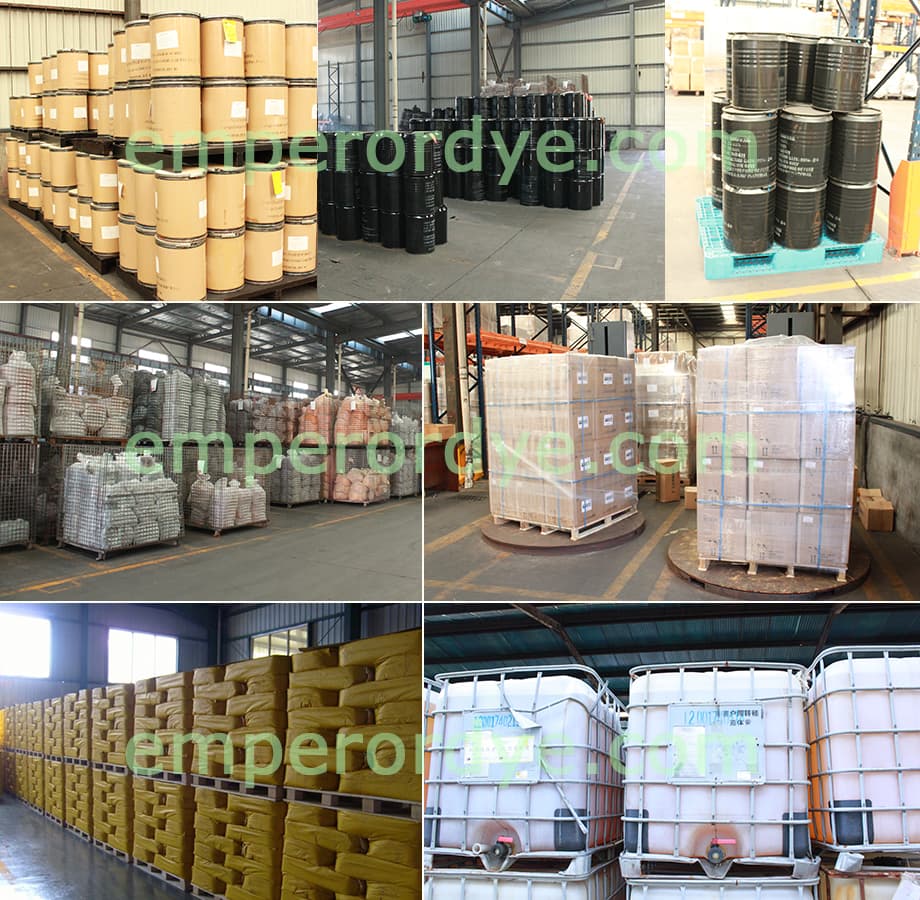Application and parameters of Basic Red 1
Basic Red 1
- TRADE NAME:
- Rhodamine 6GDN
- Basic Rhodamine 6GDN
- Mitsui Rhodamine
- Rhodamine J
CAS NO: 989-38-8
CI.NO: 45160
Basic Red 1 Physical and Chemical properties
| Light Fastness | 4 |
| Perspiration Fastness(fading) | 4-5 |
| Perspiration Fastness(stain) | 1 |
| Soaping(fading) | 3 |
| Soaping(stain) | 3-4 |
Application Features
|
K Value |
f value |
Solubility(g/L) |
Other fiber stains(grade) |
Dyeing pH value |
Application classification |
||||||
|
— |
— |
— |
cotton |
viscose |
nylon |
polyester |
wool |
||||
|
— |
— |
— |
— |
— |
— |
— |
— |
— |
— |
— |
Basic dye |
Colour Fastness Test
|
Fiber |
Item |
Sun exposure |
Soaping |
Perspiration |
||
|
Light |
Midium |
Dark |
||||
|
Silk |
Sample Change |
2 |
2 |
2 |
3 |
4~5 |
|
White silk stained |
— |
— |
— |
3~4 |
1 |
|
Appearance is dark purple red glitter crystal, soluble in water, showing greenish scarlet with fluorescence. It is soluble in alcohol with fluorescent yellow red. It is yellow in concentrated sulfuric acid and turns red after dilution. The concentrated nitric acid is apricot yellow, which is slightly diluted and turns orange. The aqueous solution plus sodium hydroxide has a red precipitate.
Basic Red 1 Application:
Appearance is dark purple red glitter crystal, soluble in water, showing greenish scarlet with fluorescence. It is soluble in alcohol with fluorescent yellow red. It is yellow in concentrated sulfuric acid and turns red after dilution. The concentrated nitric acid is apricot yellow, which is slightly diluted and turns orange. The aqueous solution plus sodium hydroxide has a red precipitate.
Use condition:
1.Silk dyeing:Basic Red 1(Rhodamine 6GDN) suitable for silk dyeing, carried out in an acetic acid bath. The dyed silk is fluorescent blue-red peach, which is yellower under tungsten light. When dyeing, it is usually made into a slurry with acetic acid and ethanol, then heated water ( 93~96°C) Dissolve, if used for silk graft dyeing, in order not to affect the pH value of the dyebath, it will be dissolved after ethanol alone. It is often dyed on silk products with direct dyeing. 1%, the fastness can reach 2~3.
2. Acrylic dyeing: It can be used for dyeing acrylic fiber, and the dye is dissolved with urea. Add acetic acid, sodium acetate and retarder when dyeing.
3. Wool dyeing: It can be used for wool dyeing, but the light fastness is very poor, only 1~2 grade.
4. Cotton dyeing: It can be used for dyeing and printing of tannin mordant cotton fiber, and the fiber is fluorescent blue-pink pink. However, the light fastness is very poor, the light fastness is 1 level, and the soaping fastness is 2~3.
5. Printing: Rhodamine 6GDN can be used for direct printing of silk fabrics, and the dosage should not exceed 0.05% of the original paste. Generally, it is neutral, acidic and straight. In the multi-color printing of dyes, it is used for embellishing colors. It does not print large and medium-sized patterns, and the dosage is not more than that of printing dextrin. 0.3%. Rhodamine 6GDN can be directly printed in the printing paste by adding the grafting agent during printing, which can also improve the color fastness. It can also be used as the coloring paste of other colors with stannous chloride as the whitening agent. The cotton cloth can be printed directly and the ground color is printed, but the color fastness is very poor.
6. Other: It can be used for dyeing leather and paper.
Packing:

20 or 25kg/compound bag, carton box, iron drum, fiber durm for powder dye and 1000kg/tank for liquid dye
Basic Red 1 Material Safety Data Sheet (MSDS)
- Inquiry for Basic Red 1
- Question: *
- You can learn about other products:
- Basic Violet 3
- Basic Violet 10
- Basic Red 1:1
- Basic Yellow 2
- Basic Yellow 13
- Basic Violet 1
- Basic Blue 7
- Basic blue 3
Products Catalog
- solvent red 24
- solvent red 49
- solvent red 122
- solvent red 111
- solvent red 146
- solvent red 195
- solvent yellow 21
- solvent yellow 33
- solvent yellow 93
- solvent yellow 98
- solvent yellow 114
- solvent orange 60
- vat red 41
- solvent green 3
- solvent green 5
- solvent blue 70
- solvent blue 104
- solvent black 3
- solvent violet 31
- solvent violet 13
Copyright right HANGHZOU EMPEROR CHEMICAL CO,,LTD © 2019 All rights reserved.

 Pусский
Pусский